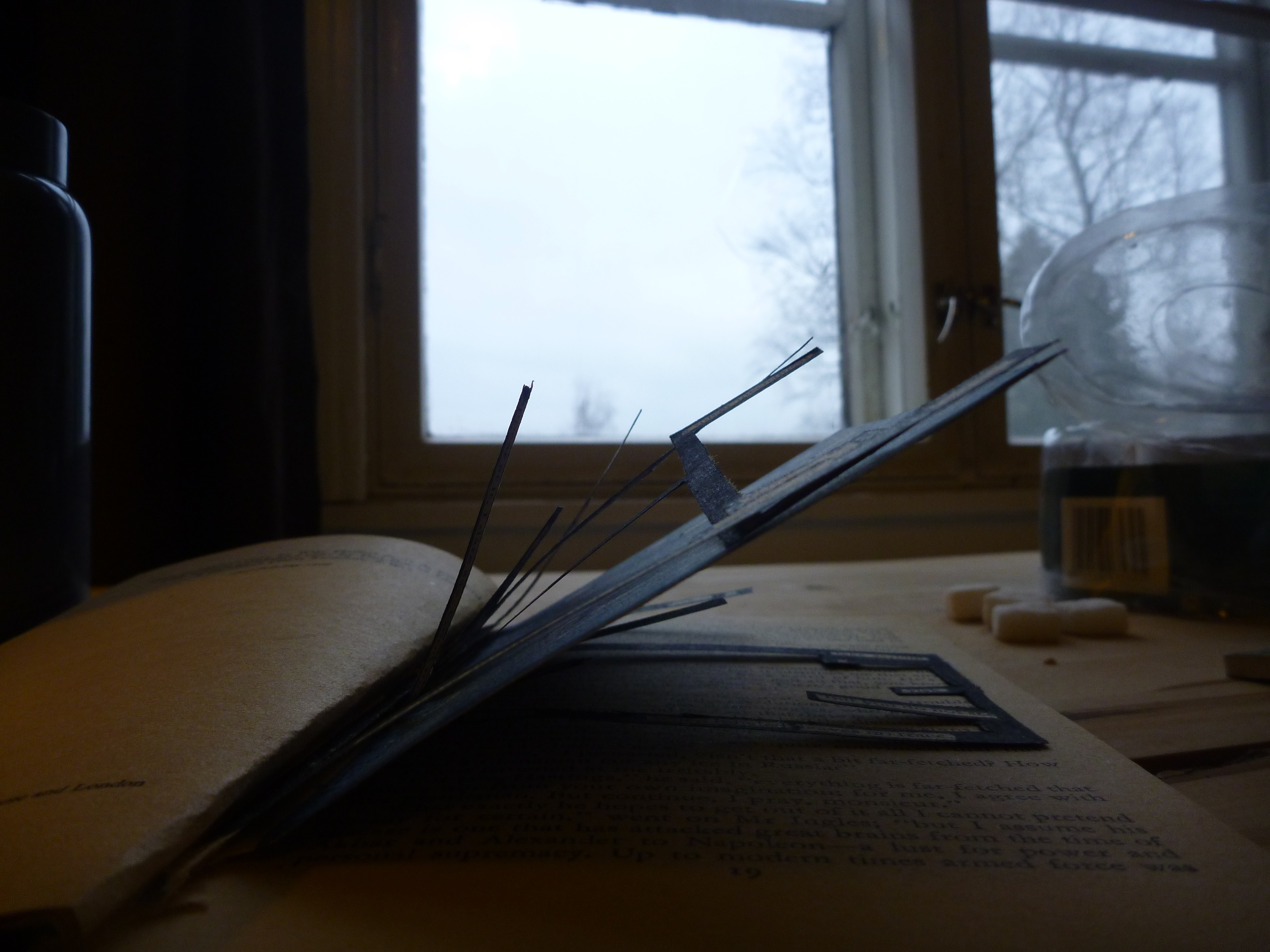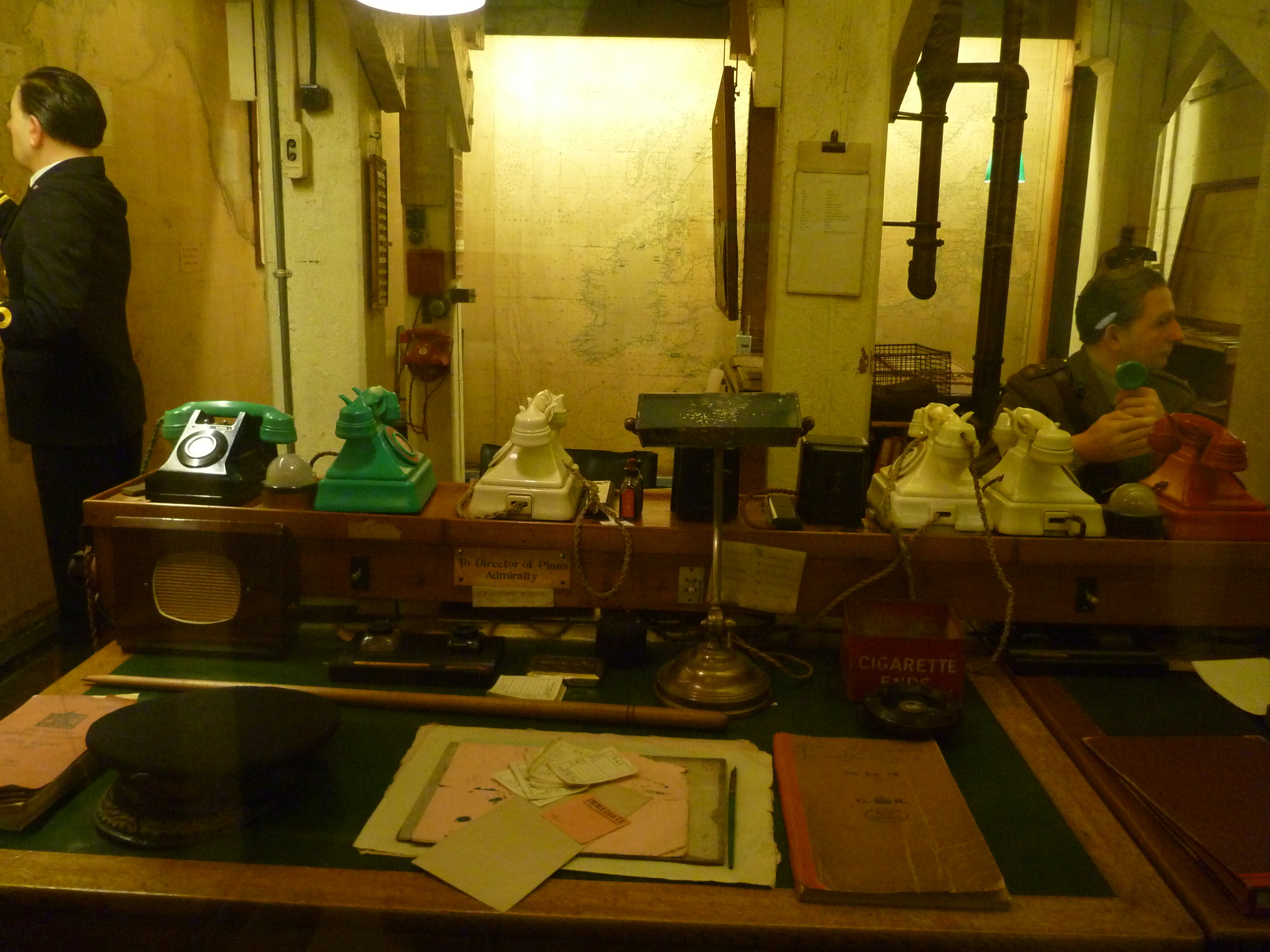I am very much looking forward to the 23rd of January, when Alistair McCartney will be reading his work at the wonderful, welcoming, and wacky Hares and Hyenas bookstore in Fitzroy. I will be reading as well, along with Rochelle D'Silva and Shane McGrath. This event is part of the Word is Out series, and is part of the Midsumma festival. I am very excited to meet Alistair for the first time. I met his wonderful husband Tim Miller last year here in Melbourne. I was thrilled to then follow the news later that year of the Defence of Marriage Act being overturned. This meant that Alistair and Tim could marry and have their marriage recognised for immigration purposes, which is important because while Tim is American, Alistair is originally from Perth. For Alistair and Tim, as for Heather and me, everything changed last year. I think we are all heaving sighs of relief.
I have been reminded again that much of my work focuses on forgotten things. Queer history, abandoned buildings, and orphan photographs are some of the things I've written about, and all are neglected or forgotten in their different ways. Perhaps the flip side of this is the work of imagination: in order to recuperate or excavate lost things, we must have the imagination to wonder about them, and the curiosity to seek them out. These things are on my mind because they are the topic of two of my essays that have just been published or come out soon. I touch on the imaginary and its importance to transformations (and queer marriage) in my essay "Imaginary Futures", which has just been published by the beautiful Kill Your Darlings. And I have just read the proofs of my essay about exploring abandoned buildings in Detroit with DetroitUrbex. The essay will appear in the December issue of Meanjin, with some of DetroitUrbex's stunning photographs. I am desperate to see the issue.
I wonder if this is my writerly preoccupation, the subject that will in some way haunt all of my writing. They say all writers have one, but I'm not sure if that's true. If it is true, I wonder how much of the preoccupation is subconscious, and how much it is an everyday presence in the writer's life.
And most importantly, once you have an obsession, is that it, for life? For me, that idea appeals and terrifies in equal measure.
Imagine if someone built a perfect little house, a one-woman house with a sleeping loft and a workspace, a kitchenette and a wood stove, a window seat and a reading chair. Imagine if the little house were in the woods of Washington, among cedars and pine trees and moss and ponds, with rabbits and owls and coyotes within howling and hooting and hopping distance. Imagine five other cottages nearby it, in a circle in the woods, and you have just imagined Hedgebrook, a retreat for women writers on Whidbey Island, Puget Sound. It was created by the visionary Nancy Nordhoff, a noted philanthropist and all-round amazing woman, and this year celebrates its 25th birthday. I had my first Hedgebrook residency in July 2010. I didn't really know what I was getting into when I was accepted, except that the place looked gorgeous on the Hedgebrook website and I liked the idea that its residents were "women authoring change." When I arrived, all the way from Brisbane and completely inexperienced with retreats (and with Washington, for that matter), I was blown away. The cottages were so beautiful, and the other residents so friendly. Each night, we sat around the dinner table and talked and laughed over a chef-prepared meal. Our days were spent writing, interspersed with walks to the beach or trips into the nearby town of Langley. I stayed in the cottage named Cedar, and worked on revisions to the manuscript that became Ghost Wife.
My cottage, Cedar.
For the past two weeks, I have been back again as part of Hedgebrook's 25th anniversary celebrations (all residents this year are past residents). The women here, and the things they achieve, are simply remarkable, and alumnae have written important and beloved books. This time, my stay coincided with the stays of Cherríe Moraga, Carolyn Forche, Lorraine Ali, Anna Alves, Kathleen Flenniken, Toni Mirosevich, and Loreen Lee. We also had the pleasure of meeting Jen Marlowe, whose book I Am Troy Davis will be released in September.
Applications for next year's residencies are open now, so make sure you apply. If you're not a writer, but would like to support Hedgebrook, consider buying the hot-off-the-presses Hedgebrook cookbook, with recipes from the Hedgebrook chefs and authors such as Gloria Steinem and Dorothy Allison.
In an hour or so, I will be driven to the shuttle that will take me over the water and on to the airport. I'll be back in Melbourne on Thursday morning. But right now, I need to go and walk in the summer sunshine. I need to smell the air and look at the flowers and say goodbye again.
Many months ago, I was asked to participate in a writing meme. Some of my writer friends—Naomi J. Williams, Melissa Ashley, Alison Quigley, and Zenobia Frost—had all been asked by other writers to answer the same series of questions about their forthcoming work. I was excited to be asked, but also a tiny bit uncomfortable, because parts of the activity (“answer the questions and then tag three other people”) conjured up thoughts of chain letters—my discomfort around which I have written about elsewhere.

This is a roundabout and meandering way of explaining why I only just responded to the questions, eons (in internet meme time) after my friends first asked me to join in. I’m sorry for my tardiness, Naomi, Mel, Ali, and Zen, and hope you’ll understand. This explanation might also clarify why I’m not tagging anyone else (but I do encourage other writers to answer the questions on their own blog, if they feel inclined). If you want to know which writers or blogs I am enjoying right now, look at the links at the bottom of this page. Here are the questions:
1. What is the working title of your current/next book?
My current book is Ghost Wife: A Memoir of Love and Defiance.
2. Where did the idea come from?
I suppose the book sprang from the ‘love and defiance’ of the title. I married my partner, Heather, in Toronto City Hall in December 2005. Since we couldn’t officially marry in Australia, I decided to document our wedding journey as a way of making it visible. I didn’t expect that the writing process would also unearth little-known stories about visibility and belonging from a range of places, including stories of my own family, and stories of other women who, decades and centuries ago, lived in marriage-like relationships in the cities and towns in which the book is set.
3. What genre does your book fall under?
It’s a memoir.
4. What actors would you choose to play the part of your characters in a movie rendition?
It would be an animated movie. An animated musical! I don’t know who would voice Michelle and Heather, but I think we’d find a way to sneak Gillian Anderson in there somehow.
5. What is the one-sentence synopsis of your book?
When Michelle travels to Canada to marry her American partner, Heather, she begins to uncover hidden histories that are all around her, and to think about how they have come to shape her.
6. Will your book be self-published or represented by an agency?
Ghost Wife: A Memoir of Love and Defiance is published by Black Inc. My agent is Lyn Tranter at Australian Literary Management.
7. How long did it take to write your first draft?
That’s a hard question to answer. Maybe two years.
8. What other books would you compare this story to within your genre?
Memoirs that are quite meditative and that have a strong focus on another character or characters, apart from the autobiographical narrator. Some memoirs that I have really enjoyed, and that might fit in this category, include Alison Smith’s Name All the Animals, Mark Doty’s Heaven’s Coast, and Mary Karr’s The Liar’s Club.
9. Who or what inspired you to write this book?
Many things inspired me, among them the work of queer theorists, feminist scholars and activists, autobiography scholars, and other memoirists. The work of historians who have researched and written about queer lives of the past was inspirational, as were the lives of the queer subjects themselves.
10. What else about the book might pique the reader’s interest?
One reader said it’s the first book she read in one sitting since reading the last Secret Seven book thirty years ago. If that doesn’t pique your interest, I don’t know what will.
Heather and I flew back to Brisbane last week for the launch of Ghost Wife. Our friends had been complaining for weeks about the endless rain, but when I arrived on the Friday, it wasn't raining at all. This was a good sign. Maybe it would be the gorgeous and relaxing visit that I so needed. I went into the city to look for a dress and, miraculously, found one that I liked in a little shop in the Elizabeth Arcade.
 Strangely, at that exact moment, a siege was taking place in the Queen Street Mall, just parallel to Elizabeth street. A shop assistant in very short shorts told me there were two men with guns in the Myer Centre; another had heard that someone had been shot. Shop attendants in the arcade's boutiques moved from store to store, passing information back and forth. In fact, there was only one gunman, and I'm still not sure if anyone apart from the gunman himself was shot (he was shot, not fatally, by police). Outside, people lined the streets, unable to re-enter the mall, which was now cordoned off. Everywhere, people talked or texted or took pictures on their phones, looking towards the Myer Centre and wondering what was happening. It's weird how extreme events like sieges and floods and accidents bring people out of their bubbles and make them want to interact with strangers. I felt the pull myself, the desire to ask strangers what they knew, even though whatever they'd heard might well be wrong. A little over an hour later it was all over, and we were wandering through the mall almost as though nothing had happened there.
Strangely, at that exact moment, a siege was taking place in the Queen Street Mall, just parallel to Elizabeth street. A shop assistant in very short shorts told me there were two men with guns in the Myer Centre; another had heard that someone had been shot. Shop attendants in the arcade's boutiques moved from store to store, passing information back and forth. In fact, there was only one gunman, and I'm still not sure if anyone apart from the gunman himself was shot (he was shot, not fatally, by police). Outside, people lined the streets, unable to re-enter the mall, which was now cordoned off. Everywhere, people talked or texted or took pictures on their phones, looking towards the Myer Centre and wondering what was happening. It's weird how extreme events like sieges and floods and accidents bring people out of their bubbles and make them want to interact with strangers. I felt the pull myself, the desire to ask strangers what they knew, even though whatever they'd heard might well be wrong. A little over an hour later it was all over, and we were wandering through the mall almost as though nothing had happened there.
That night, Avid Reader in West End was packed out. Krissy Kneen hosted, and Eleanor Jackson, Tim McGuire and Bec Jessen read their work, leaving the audience gasping with laughter and something akin to lust. The wonderful Benjamin Law launched Ghost Wife with his characteristic humour and warmth, and I read from the book, forgot to thank Heather and pretty much everyone else, and felt absolutely thrilled to see so many wonderful friends in the audience, people who had listened to me go on about this book for years now, and now it really was a book.
We celebrated with drinks across the street, and went home happy. The next morning, Heather and I woke up in our old house, in our old room, and it was raining, and everything was so familiar and wonderful. But we don't live there anymore. It was a strange feeling.
Over the long weekend, we caught up with most of our friends, but in a ragged, incomplete sort of way. As we were leaving, two days later, one of our dearest friends was in labour with her first child. Melbourne is home for now, and it's full of opportunities and excitement and great people. But oh, Brisbane, we love you, and it really hurt to leave.
We took this picture from the plane window on the way home. I guess it's a reminder that the in-between can be a beautiful place, too.
Ghost Wife started to appear in bookstores last Friday, and Heather and I spent Friday night strolling from shop to shop in a wonderful procession that involved seeking the book out, finding it, being delighted, and taking pictures. Since my last book was a poetry collection, and poetry books barely hit bookstore shelves, this process is entirely new to me. What would it be like, I wondered, to see the book in the store? And what would it be sitting next to?
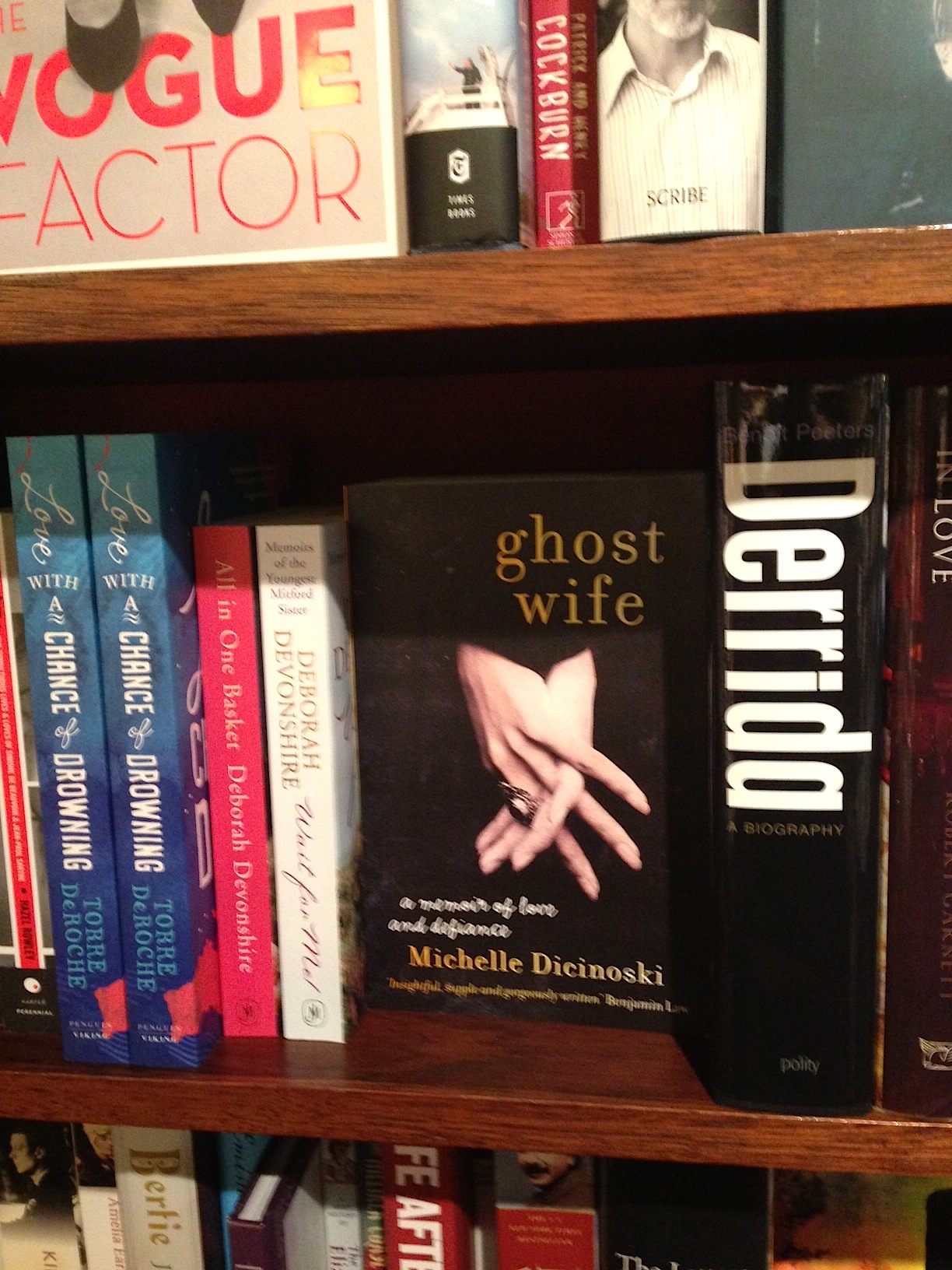 At Hill of Content, Ghost Wife was sitting between books about or by Jacques Derrida and Deborah Devonshire (the youngest of the Mitfords). At Dymocks, it was in "biography" instead of "Australian biography," and sat between Jung Chang's Wild Swans and the autobiography of Clarissa Dickson Wright, one of the Two Fat Ladies (did you know she had ten middle names? Amazing). At a third store, it sat between a Susanna Devries biography and The Happiest Refugee. It was all just wonderful, and Heather and I celebrated afterwards with ice-cream. That night, we also grabbed a copy of Australian Book Review, in which the reviewer Jay Daniel Thompson calls Ghost Wife "powerful and deeply moving." The next day, over breakfast, we read a review in the Age, in which Thuy On says the book is "poignant and moving, the prose clear-eyed and affecting all at once." And then today, we spent the morning at the ABC studios talking to Natasha Mitchell on Radio National's "Life Matters." You can listen to the podcast of the interview here.
At Hill of Content, Ghost Wife was sitting between books about or by Jacques Derrida and Deborah Devonshire (the youngest of the Mitfords). At Dymocks, it was in "biography" instead of "Australian biography," and sat between Jung Chang's Wild Swans and the autobiography of Clarissa Dickson Wright, one of the Two Fat Ladies (did you know she had ten middle names? Amazing). At a third store, it sat between a Susanna Devries biography and The Happiest Refugee. It was all just wonderful, and Heather and I celebrated afterwards with ice-cream. That night, we also grabbed a copy of Australian Book Review, in which the reviewer Jay Daniel Thompson calls Ghost Wife "powerful and deeply moving." The next day, over breakfast, we read a review in the Age, in which Thuy On says the book is "poignant and moving, the prose clear-eyed and affecting all at once." And then today, we spent the morning at the ABC studios talking to Natasha Mitchell on Radio National's "Life Matters." You can listen to the podcast of the interview here.
Amid all the excitement of actually being on the radio, I forgot to mention that it was "Life Matters" that gave me one of the central metaphors of the book. Well, more precisely, it was the historian Stephanie Coontz, who went on "Life Matters" back in 2005 to talk about her book Marriage, A History. It was during Coontz's discussion with host Julie McCrossin that I first heard about the phenomenon of ghost marriage. At some times in the history of marriage, Coontz said, people have married ghosts. In China, for instance, the practice was not uncommon (and still occurs today), and ghost marriages were viewed as legitimate marriages before the law, though one party was a spirit (or in some cases, both: two ghosts could be married to each other). There was even a ghost wedding ceremony.
In the case of my marriage to Heather, I realised it would be the marriage itself that was the ghost, for once we left Canada, the marriage would become a kind of apparition, at least in terms of the law. What a strange thing, then, to come to "Life Matters" not as a listener, but as a guest—and with a book that was sparked in part by the listening experience.
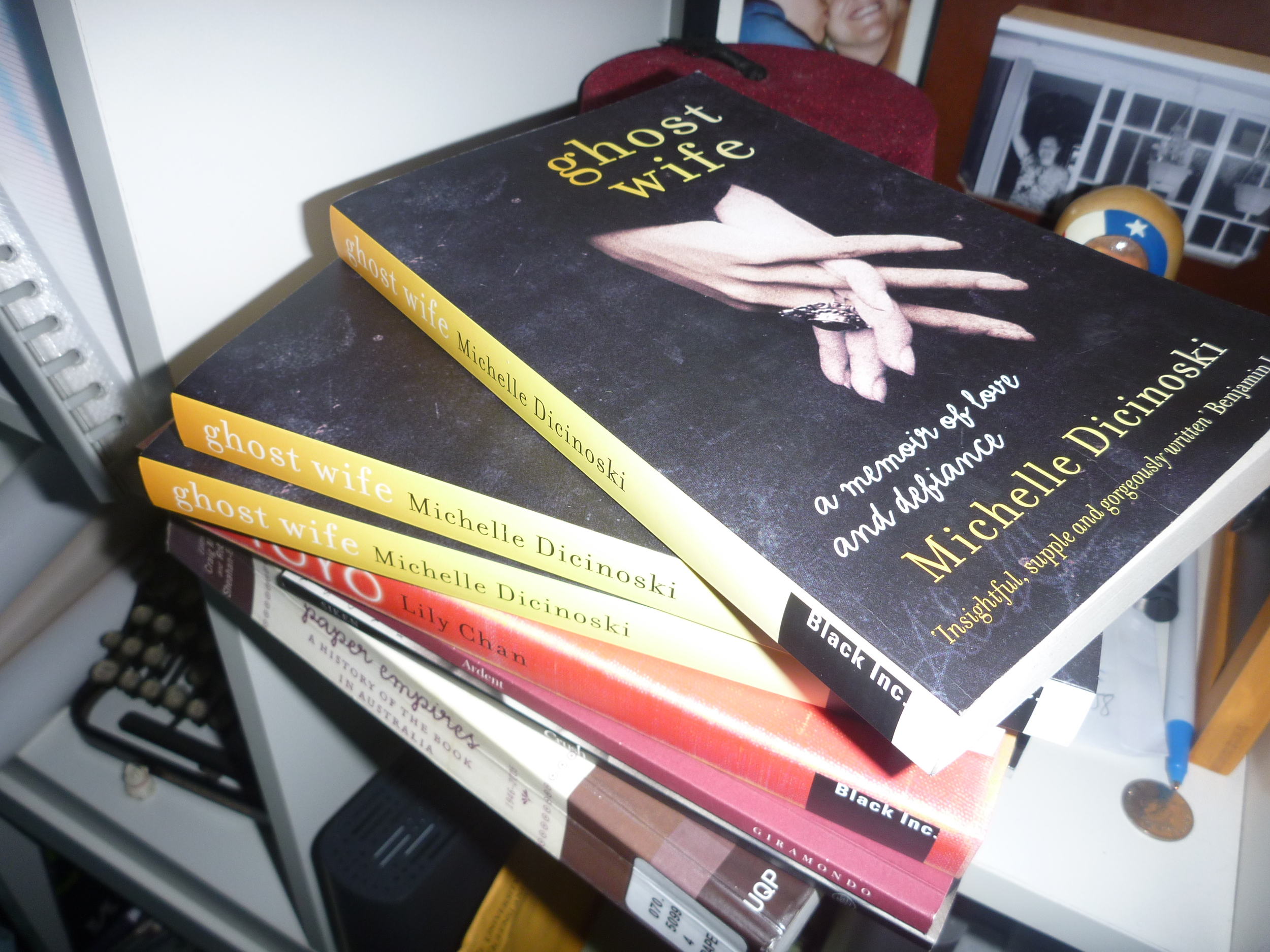 It's funny to think that years of work are over and my memoir Ghost Wife is finished. It came back from the printer just before Christmas; instead of being a manuscript that lives mainly in my head, now it's a book, an actual thing, and it's sitting on a shelf in my living room. It's a weird thing at first when something you've lived with for so long as an idea becomes a physical presence, a paper-and-ink manifestation, something fixed. I actually feel a bit awkward around it right now, because I don't know what to do with it. It's as though it's a child newly returned from boarding school, a child who's become, in absence, taller, bolder, and changed in invisible but undeniable ways. Of course, it's the same child beneath it all, but it's something else too, now. I steal glances at it from time to time; other times, distracted, I forget and then remember that it's my own.
It's funny to think that years of work are over and my memoir Ghost Wife is finished. It came back from the printer just before Christmas; instead of being a manuscript that lives mainly in my head, now it's a book, an actual thing, and it's sitting on a shelf in my living room. It's a weird thing at first when something you've lived with for so long as an idea becomes a physical presence, a paper-and-ink manifestation, something fixed. I actually feel a bit awkward around it right now, because I don't know what to do with it. It's as though it's a child newly returned from boarding school, a child who's become, in absence, taller, bolder, and changed in invisible but undeniable ways. Of course, it's the same child beneath it all, but it's something else too, now. I steal glances at it from time to time; other times, distracted, I forget and then remember that it's my own.
You will have a chance to see it very soon. Bookseller + Publisher magazine has already published the first review, noting 'deftly drawn' descriptions of landscape and 'pitch-perfect atmosphere.' The book will be released at the end of February, so now, in these final, weird days, I am gearing up for all the promotional activities ahead (more on those to follow) . . . and stealing sidelong glances at this newest addition to the bookshelf.
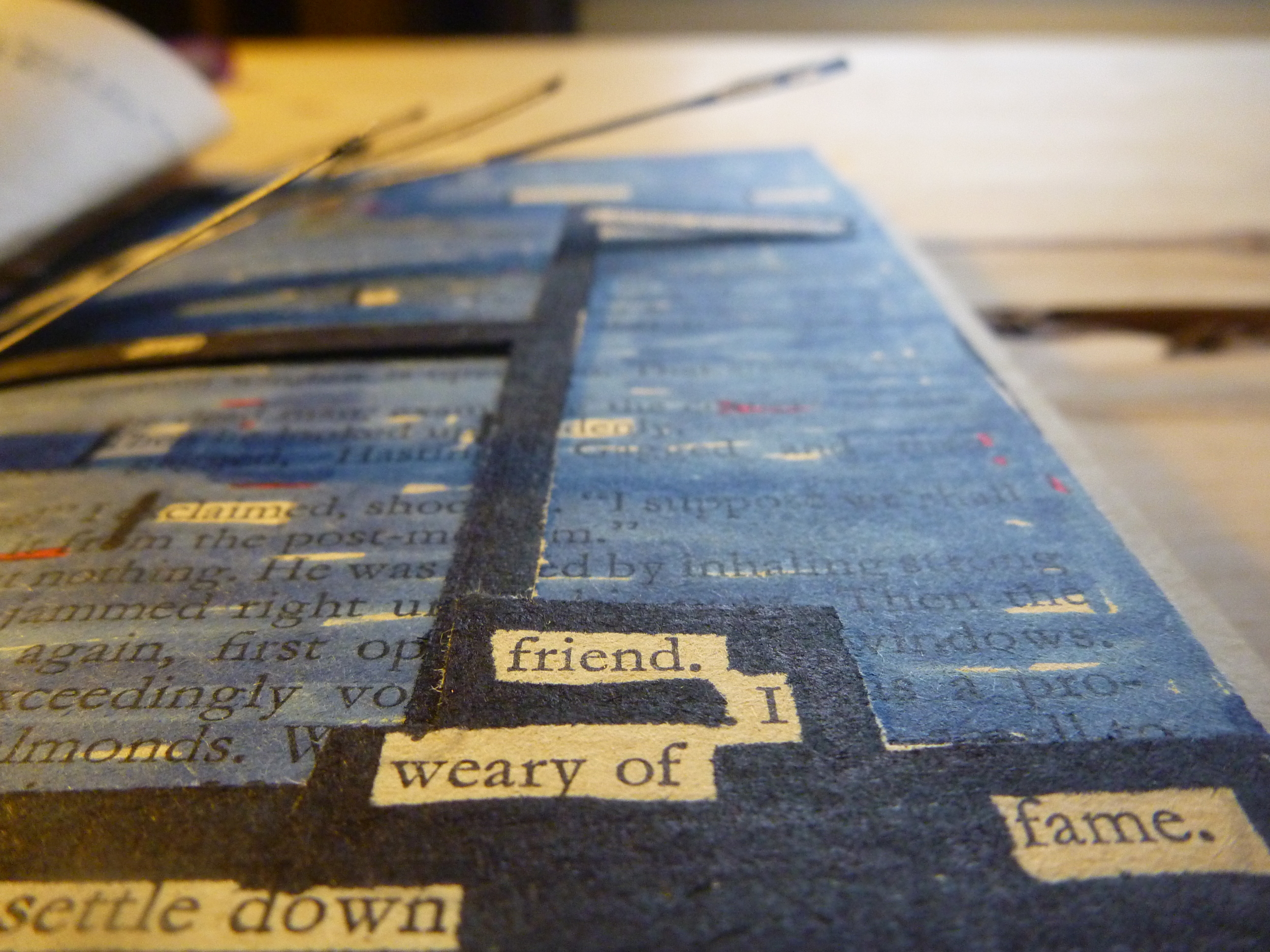 Over the past couple of weeks in residence here at Arteles, I’ve been inspired to experiment with cut-up poetry. I haven't spent much time exploring the technique before now, but it's always interested me. The impetus behind my recent experimentation was this: November’s artists-in-residence decided that we would all make artifacts to display at a local shop to promote an open studios night. We were hoping that, intrigued by our work, the local community would come along to Arteles to see more of what we have been working on.
The display was in a stall at a remarkably vibrant and busy flea market, LA Kirpparitaidemessut (LA Fleamarket). It’s a huge space in which locals hire stalls and sell their goods on a week-by-week basis, and it seems to function as a community hub in the relatively small town of Hämeenkyrö (birthplace, incidentally, of Finland's only Nobel Prize winner in literature [1939], Frans Eemil Sillanpää).
Over the past couple of weeks in residence here at Arteles, I’ve been inspired to experiment with cut-up poetry. I haven't spent much time exploring the technique before now, but it's always interested me. The impetus behind my recent experimentation was this: November’s artists-in-residence decided that we would all make artifacts to display at a local shop to promote an open studios night. We were hoping that, intrigued by our work, the local community would come along to Arteles to see more of what we have been working on.
The display was in a stall at a remarkably vibrant and busy flea market, LA Kirpparitaidemessut (LA Fleamarket). It’s a huge space in which locals hire stalls and sell their goods on a week-by-week basis, and it seems to function as a community hub in the relatively small town of Hämeenkyrö (birthplace, incidentally, of Finland's only Nobel Prize winner in literature [1939], Frans Eemil Sillanpää).
The plan was that we would make or re-purpose small objects and try to sell them, and also leave flyers about the open studios event.
As the only resident poet, I was a little worried. What on earth would I show? No one would buy a single poem, would they? Especially not one written in English.
In the days before, I had been listening to some of the other artists talk about interventions. In the art world, interventions are kinds of performance or conceptual art in which the artist takes a pre-existing space or thing and changes it—intervenes—and the intervention itself is the art.
In the spirit of such interventions, I decided to make a small poetry intervention. I would buy a book from LA, make blackout poems on some of its pages, and return it to LA for sale in its new form. The first challenge was finding an English-language book (any attempt to do this project with a Finnish-language book seemed destined to result in total nonsense, since I can’t read Finnish). I ended up with a 1960s reprint of Agatha Christie’s The Big Four (1927).
At first, I planned to simply black out sections of the page and leave behind a poem, like Austin Kleon’s lovely newspaper blackout poems. But as I began to experiment, I wondered what would happen if I actually excised parts of the pages. So I began cutting. As I did, I built different poems on different pages, but the cut-outs meant that poems could be read either separately or together. They formed one longer poem, and a series of shorter poems, all at once. And their format was partly dictated by how the reader interacted with the text, since some parts of the poems were obscured by other parts, depending on the position of the reader.
At times I was too hasty or clumsy with my scissors, and lost text that I had planned to keep (or accidentally blacked out part of a word with my marker). Then, my mistakes dictated that the poem became something else again. (Dadaist and cut-up fiend Tristan Tzara apparently wrote: "We have always made mistakes, but the greatest mistakes are the poems we have written".)
It was fiddly and surprisingly hard work to come up with a few pages of poetry, and I left the book basically intact after that. But I am definitely intrigued by the possibilities of the format.
The final "found" poem sprang out at me in advance of new, disappointing debates regarding asylum-seeker policy in Australia. With slightly altered punctuation, the poem reads:
They reckon it
a fake asylum
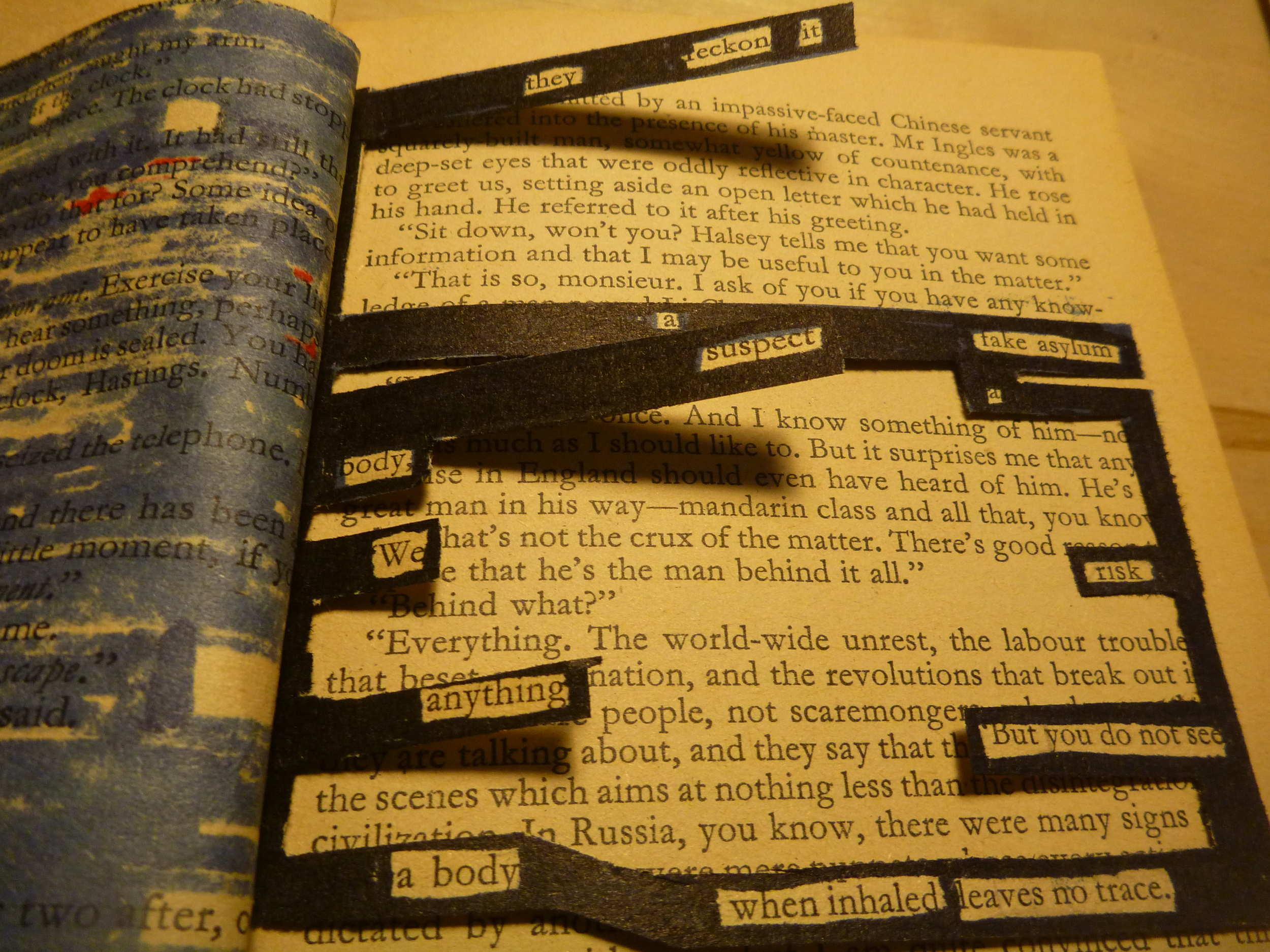
a suspect body.
We risk anything
but you do not see.
A body when inhaled
leaves no trace
When I was researching literary cut-ups, which necessarily led me to William S. Burroughs, I discovered a wonderful animation of Burroughs talking about cut-ups (and by some great fluke, it was made by a Finnish animator, Matti Niinimäki). Maybe Burroughs was right: maybe "when you cut into the present the future leaks out." Right now, I don't feel in any position to foretell the future. I am just thinking maybe when you cut into anything the past leaks out.
I have been in Finland for the past few weeks, and before that I was in London, Budapest, and Prague doing poetry readings as part of my Marten Bequest travels. After all the busyness of the travelling and readings—and a healthy dollop of sightseeing, since this is my first visit to Europe—it’s been good to stay in one place and focus, finally, on writing new poems.
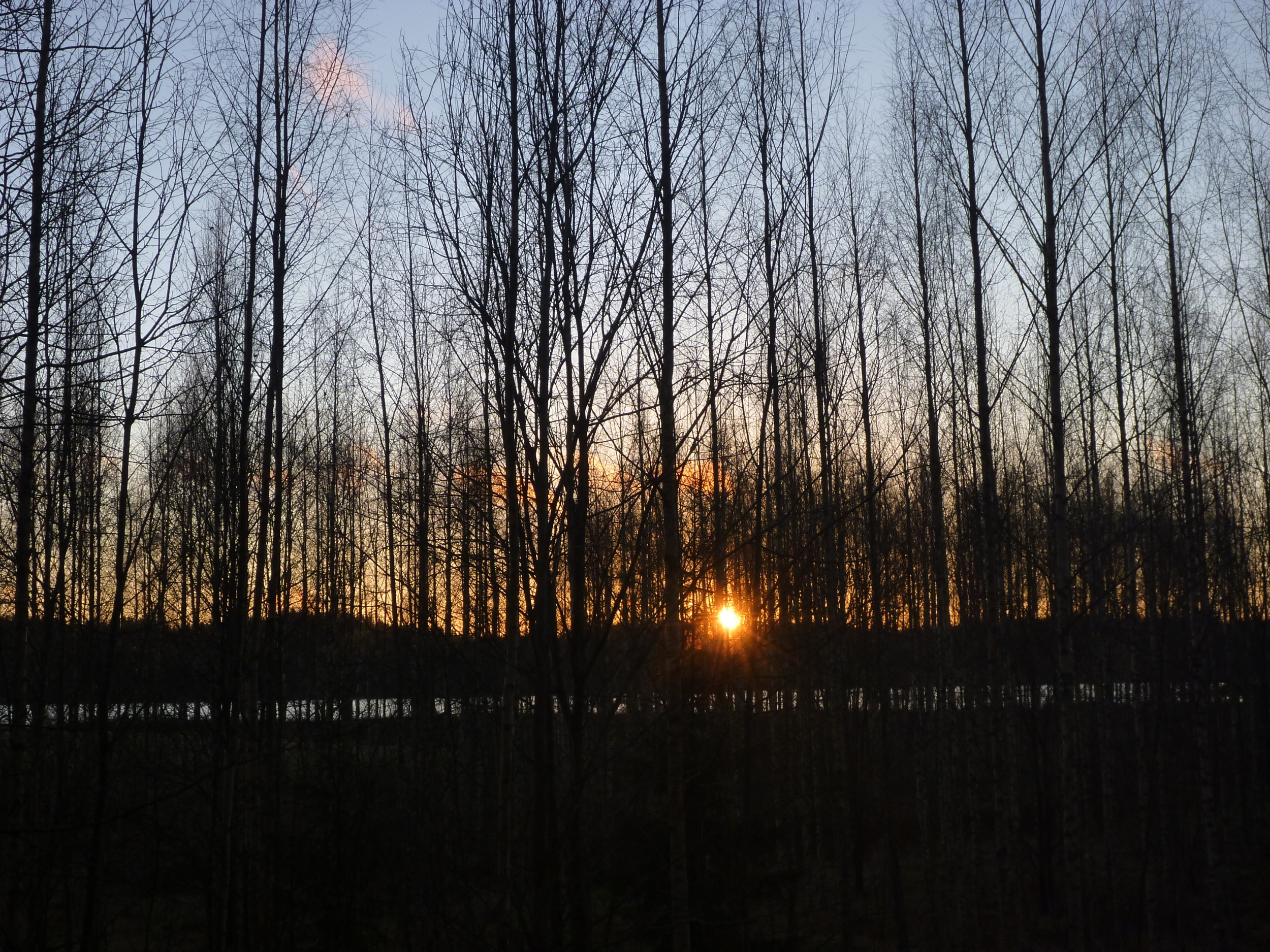
I’m at a creative residency called Arteles, which is around 200km north-west of Helsinki. I’m here with eight other residents, all of them artists, from the UK, Finland, Hungary, Canada, and Israel. The nearest town is seven kilometres away, and all around us are fields and lakes and little red Finnish houses. And, next to the little red houses, little red house-shaped saunas.
In terms of climate, this part of Finland in November is rainy in a drizzly and morose sort of way, with daytime temperatures around zero to five degrees. But the most striking thing about the place is the lack of light. Each day will be a few minutes shorter than the last, up until the solstice on December 21. (Of course, this year we may be too busy to celebrate the solstice, given that it coincides with the end of the world—unless we can make it to a tiny, Armageddon-proof French village).
For me, the lack of light is so novel and so affecting that it has shaped a lot of my experience here. More interested than usual in temperatures and forecasts, I installed a weather app that tells me that sunrise was at 8:50 today, and sunset was at 3:36. By the time I leave here in ten days, sunrise will be at 9:18 and sunset at 3:15.
On the night I arrived here, I heard one of the other artists, Ofri Lapid, talk about the centrality of light in the installation she was developing. That started me thinking. In the weeks since then, I’ve written a small suite of poems examining light, landscape and translation. Anu Turunen, the only Finnish artist in residence, is translating the poems into Finnish, and I plan to read them—perhaps with Finnish and English overlaid in an audio recording—at an open studio event on Saturday here at Arteles. If all goes to plan, the reading will take place within Ofri’s light installation, which will be constructed on the day with household lamps brought along by local residents who attend the event.
Aside from the poems about light and translation, I’ve been working on many other new poems and even a little bit of prose. As I look out on muddy fields, or frost, or the dark, the experience within my writing space has been weirdly rich and fertile, and surprisingly bright and warm.
Martin Duwell has reviewed Electricity for Beginners over at Australian Poetry Review. He reviews one book each month, on the first of the month, and I am very pleased that mine made it on to his list.
I write from foggy England, where I am about to commence my reading tour, thanks to the Marten Bequest Travelling Scholarship. I will be reading at Greenwich University on Tuesday the 30th, and then at the Menzies Centre on Wednesday the 31st of October as part of the public events calendar. If you're in London, come along to the Strand Campus, Strand Building, SO11, for a reading commencing at 6:15pm.
Given my interest in "hidden" things, I had to visit the Churchill War Rooms, the underground bunker in which Churchill and his staff conducted war operations and stayed safe from the Blitz. Here's a picture of the telephones in the Map Room. The wax dummies add an extra something to the scene, that's for sure.



